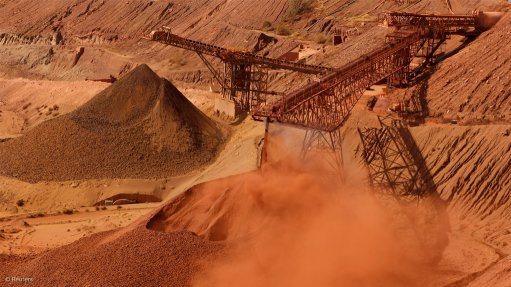
Photo by: Reuters
PERTH (miningweekly.com) – Iron-ore prices are expected to falter in the three months to December 31, as ongoing increases in supply and the onset of winter in the northern hemisphere sets in.
While iron-ore prices were projected to rebound in the medium term as higher-cost producers exited the market and world steel production growth rebounded, the increased supply, predominantly from Australia, was forecast to drive down the 2015 and 2016 prices in the seaborne market.
In its latest Resources and Energy Quarterly report, the Department of Industry, Innovation and Science noted that, as a whole, iron-ore prices were forecast to reach $53/t free-on-board in 2015, down 40% on the 2014 average.
Chief economist Mark Cully noted that while current market conditions were challenging, demand for Australia’s resources and energy commodities over the medium to long term were projected to increase owing to growing consumption in developing nations.
Cully said this expectation was based largely on increasing urbanisation and the expansion of manufacturing in emerging, highly populated Asian economies.
Supported by a combination of higher export volumes, projected higher prices and an assumed weaker Australian dollar, Australia’s earnings from resource and energy commodities was projected to increase at an average rate of 6% a year from 2015/16 to reach A$235-billion in 2019/20.
Australia’s export earnings for the three months ended September declined to A$172-billion, on the back of lower commodity prices.
“The Australian resources and energy sector is transitioning decisively into the production phase of the resources boom,” Cully said.
Australia’s resources and energy commodities exports are expected to increase rapidly in response to a substantial increase in production capacity, particularly in liquefied natural gas (LNG) and iron-ore.
Australia is expected to emerge as the world’s largest LNG exporter over the period to 2020, following a tripling in exports.
In 2014/15, the country exported some 25-million tonnes of LNG and, by 2019/20, there would be 87-million tonnes of LNG capacity in place, with a projected combined export volume of just over 76-million tonnes.